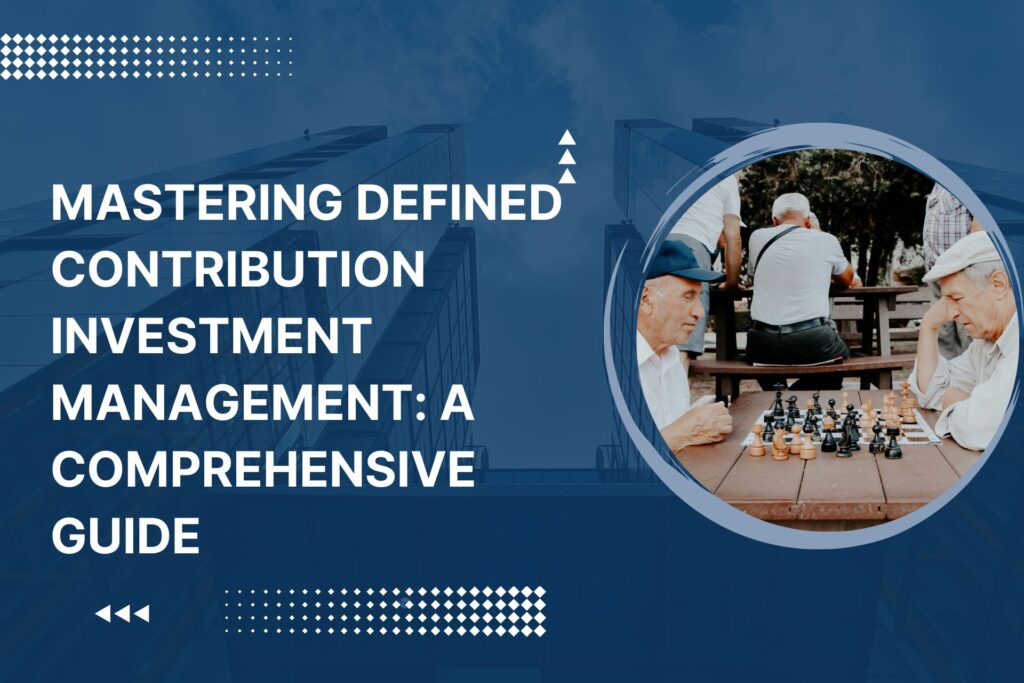In the dynamic realm of investment management, Defined Contribution (DC) plans have emerged as a cornerstone for retirement savings, offering flexibility and control to both employers and employees. Understanding the intricacies of DC investment management is paramount for maximizing returns and securing financial futures. In this comprehensive guide, we delve into the nuances of DC investment management, exploring strategies, challenges, and best practices to empower investors and professionals alike.
Understanding Defined Contribution Plans
Defined Contribution (DC) plans represent a shift from traditional pension schemes, placing the onus of retirement savings on individuals rather than employers. Common examples include 401(k) and 403(b) plans in the United States. In a DC plan, contributions are made regularly by employees, often with matching contributions from employers, and invested in a selection of securities such as stocks, bonds, and mutual funds.
The Importance of Effective Investment Management
Effective Defined Contribution investment management is crucial for optimizing returns and mitigating risks within individual retirement accounts. Unlike Defined Benefit (DB) plans, where payouts are predetermined, the value of a DC plan upon retirement depends entirely on the performance of its investments. Therefore, prudent investment management is essential for achieving retirement goals.
Strategies for Success
Diversification
Diversification is a fundamental principle of investment management, especially within Defined Contribution plans. By spreading investments across various asset classes, sectors, and geographical regions, investors can reduce portfolio volatility and enhance long-term returns. A well-diversified portfolio typically includes a mix of equities, fixed-income securities, real estate, and alternative investments.
Risk Management
Managing risk is paramount in Defined Contribution investment management. While higher-risk investments may offer greater potential returns, they also entail increased volatility and the potential for losses. Employing risk management techniques such as asset allocation, portfolio rebalancing, and hedging strategies can help mitigate downside risk while preserving upside potential.
Active vs. Passive Management
One of the perennial debates in investment management is the choice between active and passive investment strategies. Active management involves actively buying and selling securities in an attempt to outperform the market, while passive management aims to replicate the performance of a broad market index. Both approaches have their merits, and the optimal strategy may vary based on individual preferences, risk tolerance, and market conditions.
Challenges and Considerations
Participant Engagement
One of the primary challenges in Defined Contribution investment management is ensuring active participant engagement. Many employees lack the financial literacy necessary to make informed investment decisions, leading to suboptimal outcomes. Employers and plan sponsors must provide educational resources, personalized advice, and simplified investment options to empower participants to take control of their retirement savings.
Regulatory Compliance
Navigating the regulatory landscape is another significant consideration in Defined Contribution investment management. Plan sponsors must adhere to a myriad of regulations, including ERISA (Employee Retirement Income Security Act), IRS (Internal Revenue Service) guidelines, and Department of Labor requirements. Staying compliant requires robust governance structures, transparent reporting, and regular fiduciary reviews.
Best Practices for Plan Sponsors
Fiduciary Responsibility
As stewards of retirement savings, plan sponsors have a fiduciary responsibility to act in the best interests of plan participants. This entails prudently selecting and monitoring investment options, minimizing fees and expenses, and providing clear disclosures regarding plan features and performance. Implementing a formal investment policy statement (IPS) can help guide decision-making and demonstrate compliance with fiduciary duties.
Fee Transparency
Fee transparency is critical in Defined Contribution investment management, as excessive fees can erode retirement savings over time. Plan sponsors should strive to negotiate favorable fee arrangements with service providers, benchmark fees against industry standards, and disclose all fees and expenses to participants in a clear and comprehensible manner. By minimizing fees, plan sponsors can enhance long-term investment returns and improve participant outcomes.
Want to Know More about Defined Contribution Plans?
Click here to Schedule a Free Consultation Today!Conclusion
Defined Contribution plans represent a cornerstone of retirement savings, offering individuals the opportunity to build wealth and secure financial futures. Effective investment management is essential for maximizing returns, mitigating risks, and empowering participants to achieve their retirement goals. By embracing diversification, managing risk, and adhering to best practices, investors and plan sponsors can navigate the complexities of Defined Contribution investment management with confidence and clarity.


